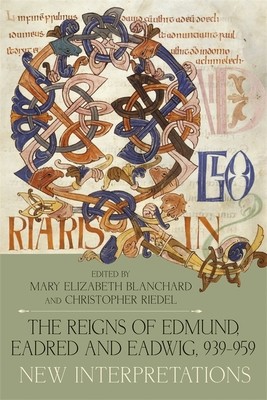
- We will send in 10–14 business days.
- Publisher: Boydell Press
- ISBN-10: 1783277645
- ISBN-13: 9781783277643
- Format: 15.6 x 23.4 x 1.4 cm, hardcover
- Language: English
- SAVE -10% with code: EXTRA
The Reigns of Edmund, Eadred and Eadwig, 939-959 (e-book) (used book) | bookbook.eu
Reviews
Description
Essays highlighting the importance of three kings - Edmund, Eadred and Eadwig - in understanding England in the tenth century.
Much scholarly attention has been devoted to both the expanding kingdom of Alfred the Great, Edward the Elder, and ÃÂthelstan, and to the larger and integrated realm of their more distant successors, Edgar and ÃÂthelred II. However, the English kingdom in the 940s and 950s, and its three kings, Edmund (939-946), Eadred (946-955), and Eadwig (955-959), the men who inherited and held together the kingdom created by their immediate predecessors, have been somewhat neglected, with little research being dedicated to these men as kings, or the era in which they ruled. This volume offers a variety of approaches to the period. Its contributors bring to light royal legal innovations to ecclesiastical law, oaths, heriot, complex factional politics, including the crucial role of queens, differing perspectives on the final era of an independent northern kingdom of York, and developments in literary culture outside the domineering trend of the later monastic reformers.EXTRA 10 % discount with code: EXTRA
The promotion ends in 20d.21:31:26
The discount code is valid when purchasing from 10 €. Discounts do not stack.
- Publisher: Boydell Press
- ISBN-10: 1783277645
- ISBN-13: 9781783277643
- Format: 15.6 x 23.4 x 1.4 cm, hardcover
- Language: English English
Essays highlighting the importance of three kings - Edmund, Eadred and Eadwig - in understanding England in the tenth century.
Much scholarly attention has been devoted to both the expanding kingdom of Alfred the Great, Edward the Elder, and ÃÂthelstan, and to the larger and integrated realm of their more distant successors, Edgar and ÃÂthelred II. However, the English kingdom in the 940s and 950s, and its three kings, Edmund (939-946), Eadred (946-955), and Eadwig (955-959), the men who inherited and held together the kingdom created by their immediate predecessors, have been somewhat neglected, with little research being dedicated to these men as kings, or the era in which they ruled. This volume offers a variety of approaches to the period. Its contributors bring to light royal legal innovations to ecclesiastical law, oaths, heriot, complex factional politics, including the crucial role of queens, differing perspectives on the final era of an independent northern kingdom of York, and developments in literary culture outside the domineering trend of the later monastic reformers.

Reviews